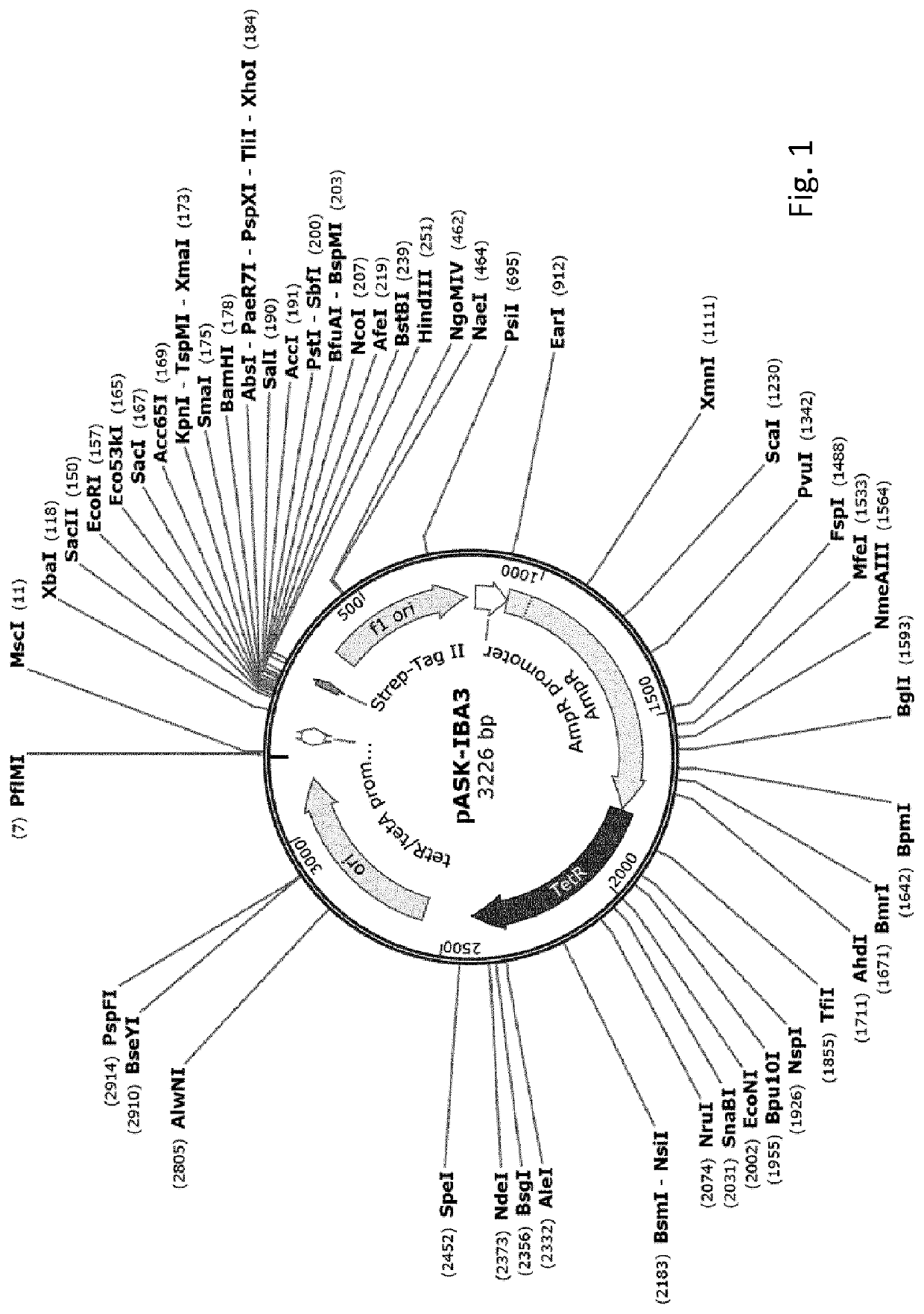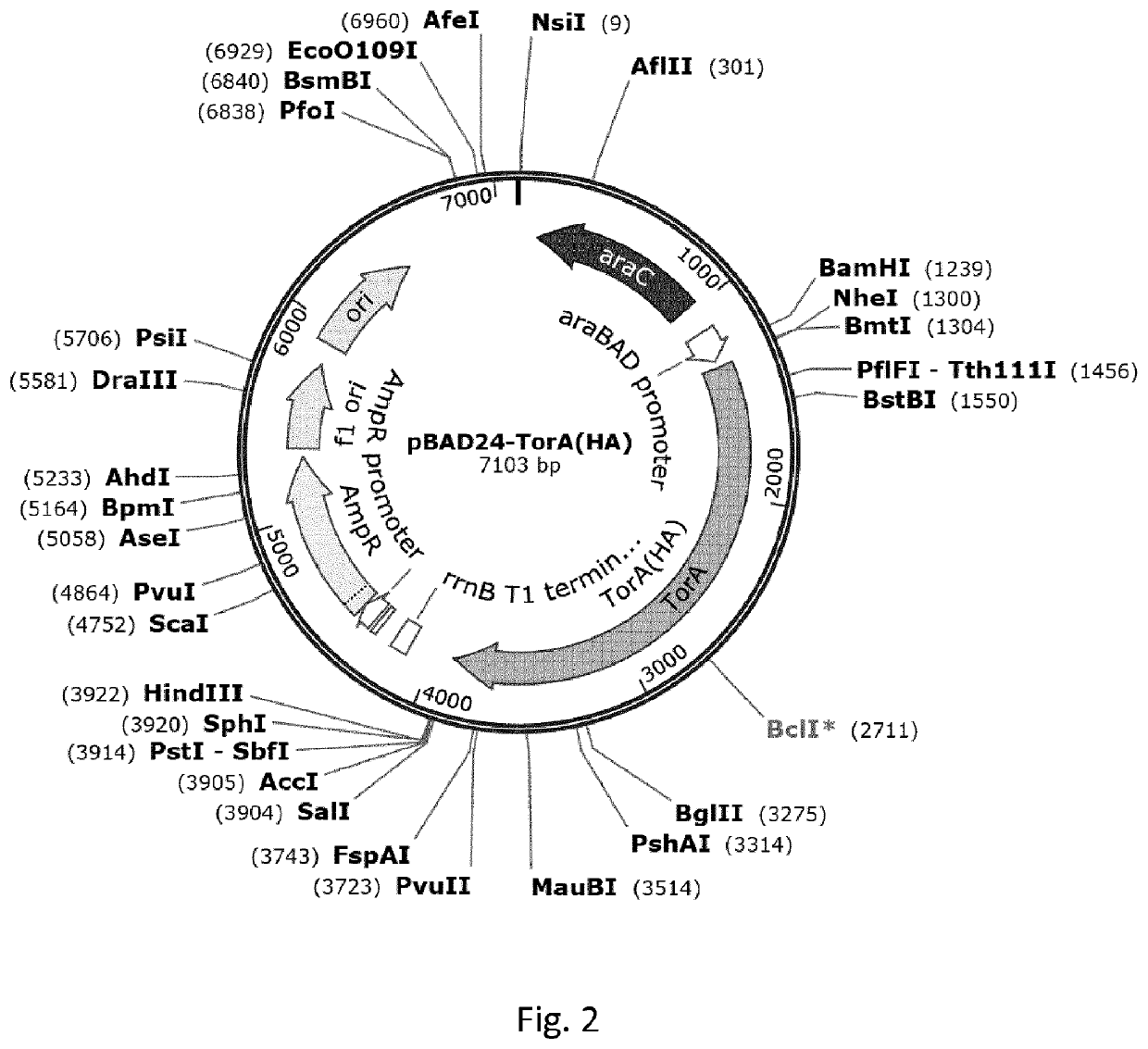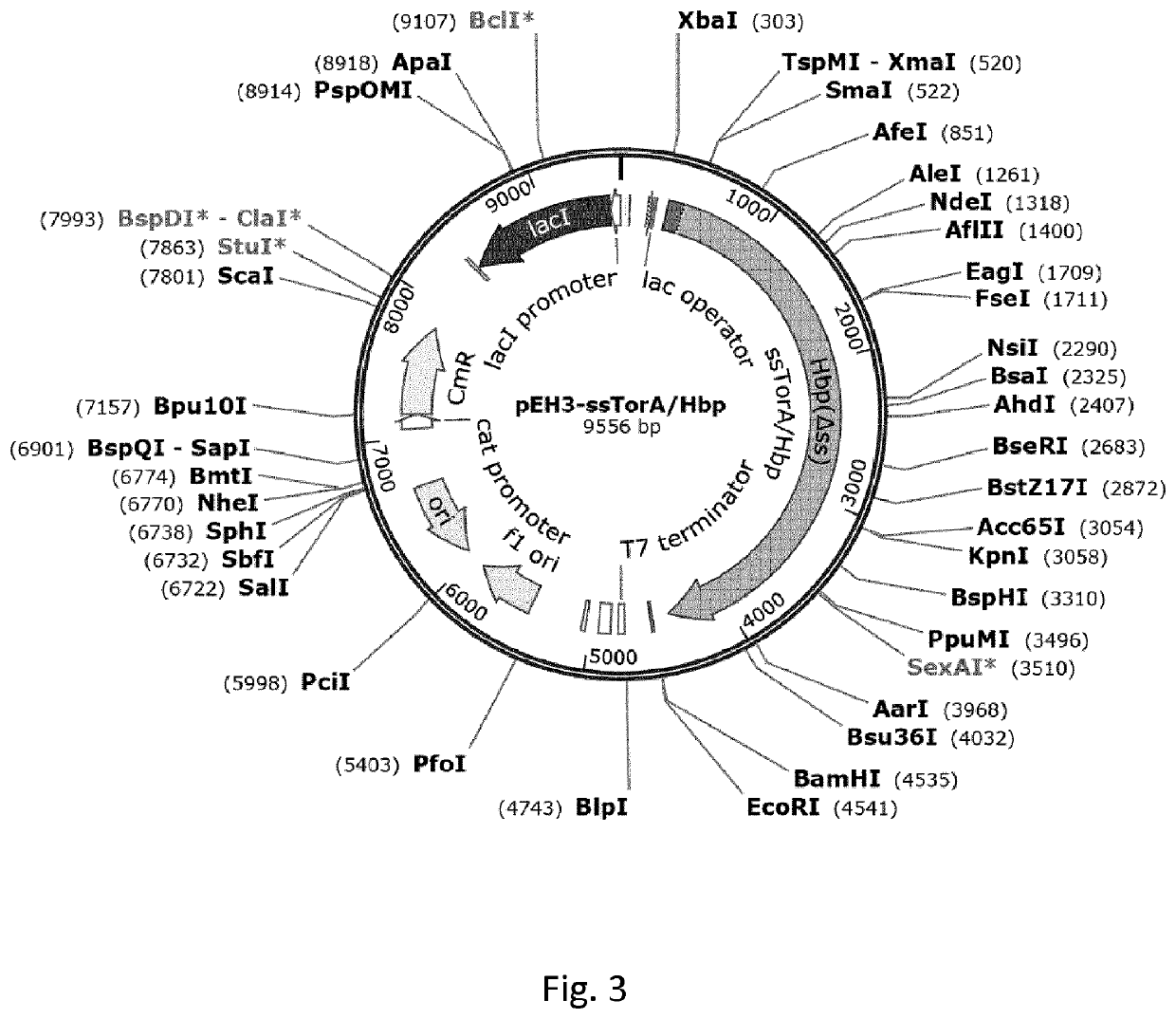Fusion polypeptides comprising one or more inclusion body tags, methods and uses
a technology of inclusion body and polypeptide, which is applied in the field of polypeptide and protein expression, can solve the problems of inability to use, unstable or incorrect folding of heterologous disulphide-containing proteins expressed in the cytoplasm of bacteria, and the inability to produce polypeptides in a cellular environment, etc., and achieves the effects of increasing the production of poi, isolation, and reducing the cost of production
- Summary
- Abstract
- Description
- Claims
- Application Information
AI Technical Summary
Benefits of technology
Problems solved by technology
Method used
Image
Examples
example 1
Expression of hEGF and IL-3 Upon Fusion to Various Signal Sequences
[0212]This example illustrates high-level expression of a fusion polypeptide comprising an N-terminal signal sequence (ss) from TorA (ssTorA; SEQ ID NO:3) and the heterologous human epidermal growth factor (hEGF) in E. coli cells upon expression from vector pASK-IBA3 under control of the anhydrotetracycline (ahtc) inducible tetA promoter. The signal sequence is not processed, suggesting the fusion polypeptide is not translocated across the inner membrane into the periplasm but accumulates in the cytoplasm. By comparison, hEGF fusion polypeptides comprising any one of the signal sequences from PhoE, Hbp or DsbA are expressed at greatly reduced levels. Furthermore, a sub-population of these fusion polypeptides is processed, most likely by signal peptidase 1, suggesting translocation into the periplasm. Similar results are obtained using fusions of various signal sequences to the heterologous protein interleukin-3 (IL-3...
example 2
Inclusion Body Formation of hEGF and IL-3 Upon N-Terminal Fusion to the Signal Sequence of TorA
[0214]This example demonstrates the expression of the fusion polypeptides ssTorA / hEGF and ssTorAIIL-3 in inclusion bodies in E. coli, using phase contrast microscopy. The formation of IBs is shown by the appearance of white spherical entities in cells induced for protein expression with anhydrotetracycline (+ ahtc) as opposed to non-induced cells (− ahtc).
[0215]E. coli MC4100 cells carrying either one of the plasmids pIBA-ssTorA / hEGF and pIBA-ssTorAIIL-3 were cultured in LB medium containing ampicillin at 37° C. When cultures reached early log-phase (OD660≈0.3), they were split. One half was induced for protein synthesis by addition of anhydrotetracyclin (0.2 μg / ml; + ahtc), whereas the other half was left uninduced (− ahtc). Cells of each culture were collected 2 hours after induction and fixed with formaldehyde (2.8%) and glutaraldehyde (0.04%) in PBS (pH 7.2). After washing, cells were ...
example 3
Inclusion Body Formation of Maltose Binding Protein and Thioredoxin a Upon N-Terminal Fusion to ssTorA
[0216]Thioredoxin A (TrxA) and maltose binding protein (MBP) are well-soluble native proteins of E. coli, and are both being exploited as solubility tags to enhance the soluble expression of fused target proteins (Waugh 2005 Trends Biotechnol 23(6): 316-320). This example illustrates efficient expression of TrxA and MBP proteins in insoluble inclusion bodies upon N-terminal fusion to ssTorA (SEQ ID NO:3). TrxA and MBP remain soluble when not fused to ssTorA. Furthermore, the example shows enhanced expression of TrxA and MBP in inclusion bodies upon fusion to repeats of ssTorA (doublets denoted 2×; triplets denoted 3×). Inclusion body formation was assayed using the fractionation technique described in the section General procedures above, in which E. coli cell lysates are subjected to low-speed centrifugation to separate the non-soluble from the soluble material. The resulting pelle...
PUM
| Property | Measurement | Unit |
|---|---|---|
| temperature | aaaaa | aaaaa |
| time | aaaaa | aaaaa |
| temperature | aaaaa | aaaaa |
Abstract
Description
Claims
Application Information
 Login to View More
Login to View More - R&D
- Intellectual Property
- Life Sciences
- Materials
- Tech Scout
- Unparalleled Data Quality
- Higher Quality Content
- 60% Fewer Hallucinations
Browse by: Latest US Patents, China's latest patents, Technical Efficacy Thesaurus, Application Domain, Technology Topic, Popular Technical Reports.
© 2025 PatSnap. All rights reserved.Legal|Privacy policy|Modern Slavery Act Transparency Statement|Sitemap|About US| Contact US: help@patsnap.com



